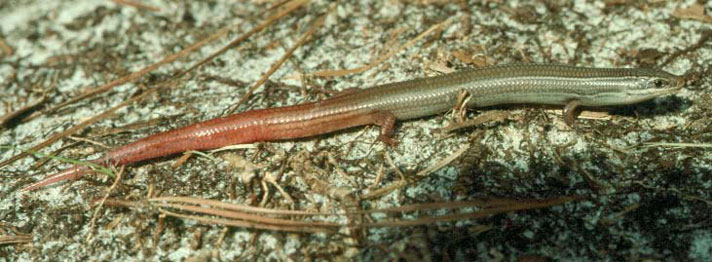The Florida Keys mole skink lives just 20 to 31 inches above sea level.
The Florida Keys mole skink, (Plestiodon e. gregius ) a coastal subspecies of mole skink threatened by the rise in sea levels caused by climate change, has been denied Endangered Species Act protections by the Trump Administration. The colorful lizard is found in the lower keys in Monroe County, Florida, and the Dry Tortugas. It lives just 20 to 31 inches above sea level along the shoreline in coastal habitat, where it burrows into the soil and uses driftwood and other objects washed on the shore as cover.

USFWS
The Florida Keys mole skink lives just 20 to 31 inches above sea level.
“The Trump administration’s outrageous decision not to protect these colorful little lizards reflects a reckless denial of climate science,” Elise Bennett, a Center for Biological Diversity attorney said in a statement released by the Center.
“Rising seas and stronger storms fueled by global warming put this coastal lizard at grave risk of extinction. With the Keys still cleaning up from Hurricane Irma’s devastation and no solution in sight for climate change, this animal’s future is not a pretty picture.”
Want To Learn More?
Lawsuit Filed To Protect Florida Keys Mole Skink
Canadian Skink Lovers Rejoice as Northern Prairie Skink Gets Extra Protections
The Florida Keys mole skink is threatened by the rise in sea levels. Some researchers say that the sea levels will rise 14 to 34 inches by 2060 and 31 to 81 inches by 2100, according to the Center.
According to the Center, protections for this reptile were denied by the Trump administration, which only looked at a 30 to 40 year habitat timeframe rather than available projections that put the loss of habitat for this lizard at 100 percent by the end of the century.
The Center for Biological Diversity petitioned the Obama Administration in 2010 to list the skink and 403 other species as endangered or threatened. In 2015, the U.S. Fish and Wildlife Service concluded that the species might warrant protections via the Endangered Species Act.



